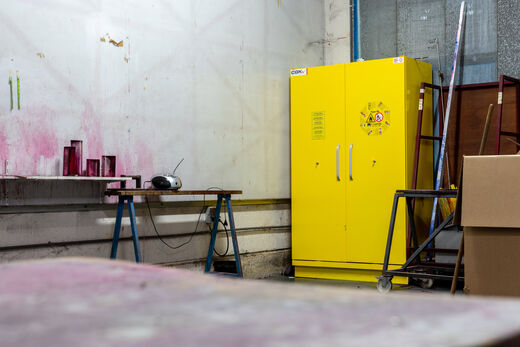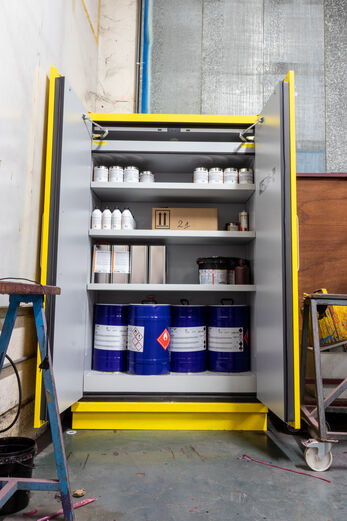Safety Cabinets Legislation
To avoid leaks or vapours of hazardous and/or flammable substances, and the major risks associated with them, it is important to always store them in a safety cabinet provided for that purpose. Our safety cabinets meet all requirements. They conform to Vlarem and are equipped with all the necessary safety devices and internal sump trays.
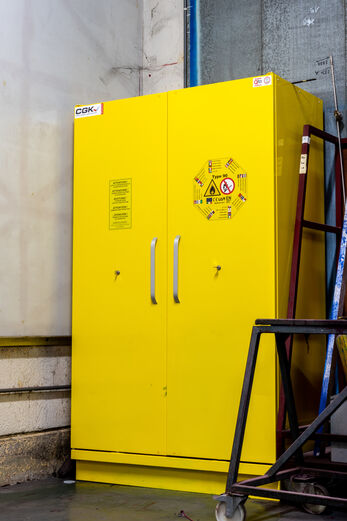
Why work with safety cabinets?
A safety cabinet is perfect for storing hazardous materials and chemicals. The cabinet reduces risks from hazardous substances and protects:
- ... your employees in their daily tasks. Such safety cabinets ensure that hazardous liquids are stored so that the safety and health (inhaling vapours or coming into contact with leaks) of your employees is guaranteed.
- ... the environment: These cabinets are equipped with collection boards and/or bins that ensure that leaks are always collected, instead of immediately leaking onto the work floor or seeping into the soil.
- ... buildings: Flammable substances must be stored in a fire-resistant manner. The safety cabinet prevents the creation or further continuation of fire within buildings.
So it's crucial to store all products correctly and to transport and handle them safely. Our products are designed and tested to ensure quality and reliability, fully complying with applicable codes and regulations in every aspect.
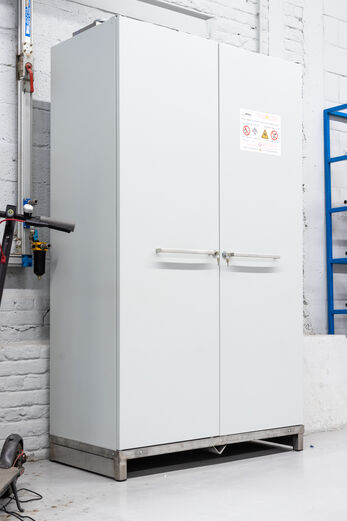
Types of safety cabinets and their characteristics
Storage of pesticides
Pesticides can be harmful to water and must be stored separately in their original sealed containers. These containers should not be stored in cardboard boxes but in a safety cabinet made of non-combustible material. It should also be immediately clear that it is a storage area for pesticides. Therefore, be sure to include the following sentence: 'Pesticides - no unauthorized access'.
Storage of acids and alkalis
Acids and alkalis must always be stored separately because they react vigorously with each other. Due to the potential release of harmful vapors, they should be kept in separate, distinct compartments equipped with a ventilation system and continuous ventilation. The compartments must be clearly marked to prevent mixing of acids and alkalis.Safety cabinets for acids and alkalis must be equipped with stainless steel spill trays or bottom sumps. CGK opts for plastic shelves/trays.
For the containment capacity of acids and alkalis, the same applies as with pesticides:
- In case of a leak, 10% of the stored quantity must be able to be contained, but at least the capacity of the largest container.
- If it concerns a water abstraction area, the entire stored quantity must be able to be contained. It is possible that your safety cabinet will need a larger containment pallet in this case.
Storage of flammable substances
A safety cabinet for flammable substances must have self-closing doors and be equipped with air supply and exhaust vents that automatically close at a temperature of 70 °C. Choose appropriate sump trays that remain liquid-tight at high temperatures. These must be able to contain 25% of the total stored products and at least the largest container.
Please note that each safety cabinet may store a maximum of 150 liters of flammable substances and must remain fire-resistant for a minimum of 60 minutes.
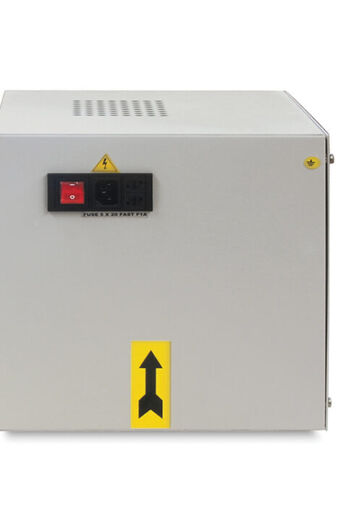
Ventilation for fire-resistant cabinets
When storing chemical substances in fire-resistant cabinets, it may be necessary to install a ventilation system when natural airflow is lacking or to reduce ATEX zones and consequently eliminate risks of fire and explosions.
Always verify whether the chemical substances are stored in opened or sealed UN-certified containers and whether a carbon filter is installed. It is crucial that these filters are regularly checked for functionality.
In spaces lacking natural airflow, it's essential to use a mechanical exhaust system. These systems play a crucial role in preventing the accumulation of hazardous vapors, thus maintaining a safe working environment. By using a mechanical exhaust system instead of natural ventilation, you minimize the ATEX zone and consequently reduce the risks of fire and explosions.
Download the PDF for more information or contact us for tailored advice.
Situations fire-resistant cabinets ATEX & ventilationNeed help choosing the right safety cabinet(s)?
Leave your details and get all the information you need.
